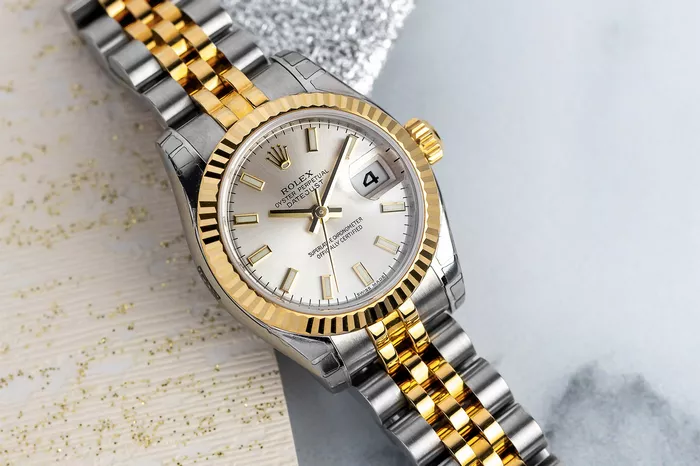Rolex watches have long been synonymous with luxury, precision, and status. Their reputation for craftsmanship and durability has made them highly sought after in the watch market. One of the key considerations for many collectors and enthusiasts is the potential for a Rolex watch to retain or even increase in value over time. This article delves into which Rolex models are renowned for maintaining their value, supported by detailed, point-by-point insights.
The Rolex Brand and Market Value
Rolex is a prestigious Swiss watchmaker founded in 1905. The brand is celebrated for its innovations in watchmaking, including the development of the first waterproof watch, the Oyster, and the perpetual self-winding movement. Rolex’s commitment to quality and its status as a symbol of success and exclusivity contribute significantly to its watches’ ability to retain value.
Factors Affecting Rolex Value Retention
Several factors contribute to the value retention of Rolex watches:
Brand Reputation: Rolex’s status as a luxury brand adds to the desirability and value of its watches.
Model Rarity: Limited editions and discontinued models tend to hold or increase in value.
Condition: Watches in pristine condition, with original parts and packaging, are more likely to retain value.
Historical Significance: Models with historical importance or notable features often appreciate.
Market Demand: Popular models with high demand are more likely to maintain their value.
Popular Rolex Models That Do Not Lose Value
1. Rolex Submariner
Overview
The Rolex Submariner is arguably the most iconic dive watch in history. First introduced in 1953, it has become a staple in Rolex’s lineup and is renowned for its robust design and versatility.
Key Features
Stainless Steel Case: Offers durability and a classic look.
Rotating Bezel: Essential for divers to measure elapsed time underwater.
Automatic Movement: Ensures precision and reliability.
Value Retention
Longevity: The Submariner’s enduring design and functionality keep it in high demand.
Market Performance: Discontinued models, like the Submariner 14060M, often appreciate in value.
Collectibility: Vintage models, such as the Submariner 5513, are highly collectible.
2. Rolex Daytona
Overview
The Rolex Daytona, introduced in 1963, is a celebrated chronograph known for its association with motorsports and its elegant design.
Key Features
Chronograph Function: Provides precise timing for motorsport and other activities.
Cosmograph Branding: Refers to the model’s association with space and speed.
Stainless Steel or Gold Case: Offers a variety of styles.
Value Retention
High Demand: The Daytona, especially the Paul Newman versions, are highly sought after.
Limited Editions: Models like the Daytona 116500LN have proven to hold value well.
Historical Significance: Association with celebrities and motorsports adds to its allure.
3. Rolex GMT-Master II
Overview
The Rolex GMT-Master II, originally introduced in 1982, is a favorite among travelers due to its dual-time zone functionality.
Key Features
Dual Time Zone: Allows the wearer to keep track of two time zones simultaneously.
Rotating Bezel: Enhances its functionality for tracking time in different zones.
Durable Construction: Built to withstand the rigors of frequent travel.
Value Retention
Iconic Models: The “Pepsi” and “Batman” bezels are particularly prized.
Discontinued Variants: Models like the GMT-Master II 116710LN have seen value appreciation.
Popularity: Consistent demand helps maintain value.
See Also: Does Rolex Make Their Own Movements
4. Rolex Day-Date
Overview
The Rolex Day-Date, often referred to as the “President,” is a symbol of prestige and luxury, first launched in 1956.
Key Features
Day and Date Display: Shows the day of the week and date.
18k Gold or Platinum Case: Enhances its status as a high-end timepiece.
President Bracelet: Known for its comfort and elegance.
Value Retention
Timeless Design: The Day-Date’s classic look contributes to its lasting appeal.
Rare Materials: Models in rare materials, such as platinum, tend to hold value well.
Historical Impact: Its association with high-profile figures enhances its prestige.
5. Rolex Explorer
Overview
The Rolex Explorer, introduced in 1953, is celebrated for its ruggedness and functionality, designed originally for explorers and adventurers.
Key Features
Simple Design: Focuses on legibility and durability.
Anti-Magnetic Properties: Ensures accuracy in challenging conditions.
Oyster Case: Provides robustness and waterproofing.
Value Retention
Vintage Appeal: Early models, like the Explorer 1016, are highly collectible.
Modern Variants: Newer models like the Explorer II have strong market performance.
Adventurous Legacy: Its association with exploration adds to its value.
Conclusion
Rolex watches, with their blend of craftsmanship, innovation, and historical significance, are well-regarded for their ability to maintain or increase in value over time. Models such as the Submariner, Daytona, GMT-Master II, Day-Date, and Explorer are particularly noteworthy for their value retention.
For collectors and enthusiasts, understanding the factors that influence a Rolex watch’s value can aid in making informed purchasing decisions. Whether you are investing in a classic piece or a modern marvel, Rolex’s legacy of quality and prestige ensures that these timepieces remain highly desirable in the watch market.

